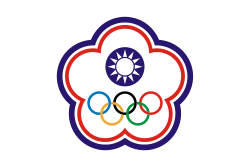National symbols of China
This is the current list of the national symbols of the entitles named China.
| Title | Symbol | Image (PRC) | Image (ROC) | Description |
|---|---|---|---|---|
| National Flag | Wu Xing Hong Ki |  National Flag of the PRC |
 National Flag of the ROC |
People's Republic Republic of China The National Flag of the People's Republic of China was made by Zeng Liansong. National Flag of China is a red field charged with 5 golden stars in the canton. The color red represents the Communist Revolution; the 4 smaller stars represents 4 social classes in the Chinese society and the largest star represents unity of China under the leadership of the Communist Party of China. The 4 smaller stars have a corner pointing towards the center of the bigger star which represents that the unity should go around the center. This flag is flown in the Mainland, Hong Kong and Macau Republic of China Due to the admission of the PRC in the International Olympic Committee, the ROC was barred to use the ROC National Flag in the Olympics, so the ROC government used a different flag for the Olympics. The Chinese Taipei flag is a white flag with a blue-white-red bordered Plum blossom that has the National Emblem in the upper middle and the Olympic symbol in the lower middle. The ROC (Chinese Taipei in the Olympics) still uses the Chinese Taipei flag. |
| National Emblem | 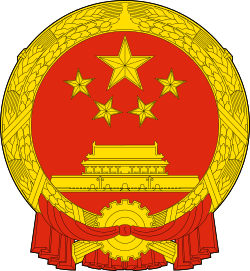 National Emblem (PRC) |
 National Emblem (ROC) |
People's Republic Republic of China The National Emblem of China includes Tianamen Gate where Mao declared the foundation of People's Republic of China in a red circle. Above this representation are 5 stars and the outer border contains sheaves of wheat and inner sheaves of rice which represents the Chinese agricultural workers. At the center of bottom portion is a cog-wheel which represents the Chinese industrial workers. the red ribbon represents the unification of Chinese people. The largest star represents CPC and the 4 smaller stars represent the 4 social classes. Republic of China | |
| National Anthem | March of the Volunteers | National Anthem of Taiwan | People's Republic Republic of China The National Anthem of China is the March of the Volunteers. It was composed by poet and playwright, Tian Han and the music was composed by Nie Er. Republic of China The National Flag Anthem was adopted in 1937. The Flag Anthem is also called the National Banner Song. The flag anthem is sung when the National Flag is raised. Because the ROC is barred from using both the ROC flag and anthem in the Olympics under PRC pressure, the National Flag Anthem is used in place of the anthem. The National Flag was heard for the first time in the Olympics when the ROC (Chinese Taipei) won a gold medal in the 2004 Summer Olympics.
| |
| Founder of the Nation | 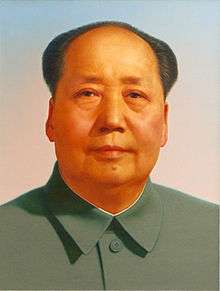 Mao Zedong |
 Sun Yat-sen |
People's Republic of China Mao Zedong (1893–1976) established the PRC on October 1, 1949, which remains a holiday to this day. His portrait is displayed on the entrance of Tiananmen Square. Republic of China | |
| National Currency |  Renminbi |
 New Taiwan Dollar |
Renminbi is the official currency of the People's Republic of China. Yuan is the basic unit of the currency. The ISO Code for Renminbi is CHY. | |
| National Animal | Giant Panda |  |
The National Animal of China is Giant Panda (Ailuropoda melanolueca) is a species of bear native to the south central China. | |
| National Animal | Chinese Dragon | Chinese Dragon is a legendary creature appearing in Chinese mythology and Chinese folklore. They have many animal-like forms such as turtle, fish, etc. but are mostly depicted as a snake with 4 legs. | ||
| National | Red-Crowned Crane | 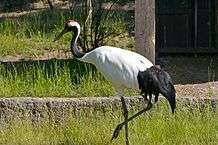 |
The Red-Crowned Crane or Manchurian Crane (Grus japonensis) is a large East Asian Crane and among the rarest cranes in the world. It is found in Siberia (eastern Russia), northeastern China and northeastern Mongolia (i.e. Mongol Daguur Strictly Protected Area) | |
| National Bird (unofficial) | Golden Pheasant | 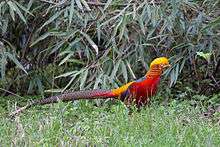 |
The Golden Pheasant (Chrysolophus pictus) is a gamebird of the order Galliformes and the family Phasianidae. It is found in western China but feral populations have been established United Kingdom, Canada, United States, Mexico, Colombia, Peru, Bolivia, Chile, Argentina, Uruguay, Falkland Islands, Germany, Belgium, Netherlands, France, Ireland, Australia and New Zealand. | |
| National | Fuzzy Kiwifruit | 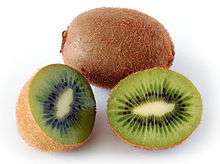 |
Fuzzy Kiwifruit (Actindia deliciosa) is the National Fruit of China. It is fuzzy, dull-brown skin and bright-green flesh. | |
| National Fruit | Jujube | 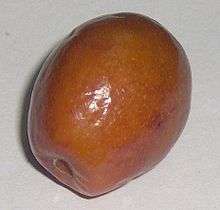 |
Jujube (Ziziphus zizyphus) is the second National Fruit of China. It is oval drupe 1.5-3 centimetres deep; looks like a date and has a single hard stone similar to olive stone. | |
| National Tree | Ginkgo | 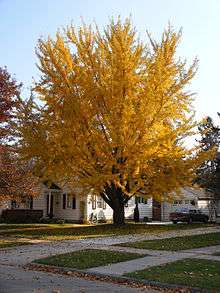 |
Ginkgo (Ginkgo biloba) is the only living tree in the division Ginkgophyta, all others being extinct. 6 trees of this species survived the Atomic Bombing of Hiroshima. | |
| National Flower | Plum blossom | 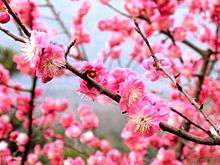 |
The National Flower was officially designated as the plum blossom by the Executive Yuan of the Republic of China on July 21, 1964.[1] The plum blossom, known as the meihua, is symbol for resilience and perseverance in the face of adversity, because plum blossoms often bloom most vibrantly even amidst the harsh winter snow.[2][3] The triple grouping of stamens represents Dr. Sun Yat-sen's Three Principles of the People, while the five petals symbolize the five branches of the government: Executive Yuan, Legislative Yuan, Judicial Yuan, Examination Yuan and Control Yuan.[1][3] | |
| National Year Designation/Calendar | Minguo Calendar | 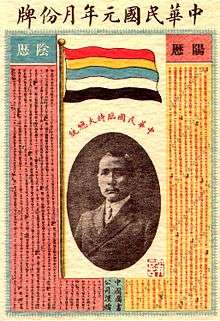 |
The year 1911 (the year of the Xinhai Revolution is the beginning of the Mingo calendar. The calendar is patterned with the style wherein once a new government is inaugurated in China, the year goes back to one (1). The year 2011 is Minguo year 100. It is still in current use of the ROC government, but many legislators want to abolish the dating system. |
References
- 1 2 Government Information Office, Republic of China – National Flower
- ↑ "The Three Friends of Winter: Paintings of Pine, Plum, and Bamboo from the Museum Collection". Taipei: National Palace Museum (國立故宮博物院). Retrieved 31 July 2011.
- 1 2 National Flag, Anthem and Flower
